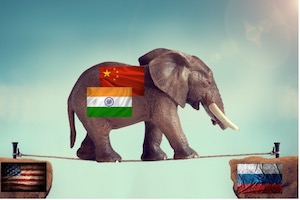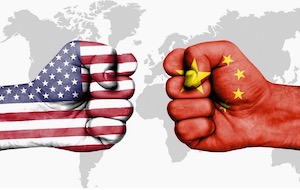The Semiconductor Industry in México
According to the science of composition, a semiconductor is a material which, when subject to light, heat or a specific electrical voltage may be transformed into a conductor. Semiconductors are used to produce memory sticks, PC cards, smart cards, microchips, microprocessors, transistors, compact flash, start media, among many other items.
Can, and Should, the U.S. Government Develop a CBDC System?

In response to the Executive Order on Ensuring Responsible Development of Digital Assets[1] issued on March 9, 2022, both the White House Office of Science and Technology Policy (OSTP) and the Treasury Department (Treasury) have recently issued reports analyzing the possible design and feasibility of creating a U.S. Central Bank Digital Currency (CBDC).[2] The reports make clear that significant technical issues and major policy considerations need to be addressed for the U.S. to develop a CBDC.
Snapshot of Section 301 Litigation – Litigating the Adequacy of the USTR’s Rationale for List 3 and List 4a

The legality of the Section 301 Actions for List 3 ($200 Billion Trade Action) and 4a ($300 Billion Trade Action) continues to be contentiously disputed before the Court of International Trade. The mass action, In re Section 301 Cases, No. 21-00052, encompasses claims of over 6,500 Plaintiffs that argue the Section 301 Duties, enacted under the Trade Act of 1974, are illegal.
China’s Economic Cost of Invading Taiwan

China and Taiwan have been locked in a tussle for decades over who gets to call the island country home. China considers Taiwan a breakaway province, while Taiwan sees itself as a sovereign nation. The recent increase in tensions between China and Taiwan has many experts worried that Chinese forces may soon attempt to retake the mainland by force, but that won’t happen anytime soon. China would face a prolonged conflict on its doorstep that would worsen its already strained economic conditions.
OFAC Reissues Cyber-Related Sanctions Regulations

An inherent aspect of any new technology is that it doesn’t take long for bad actors to figure out how it can be weaponized for nefarious purposes. Cyber-related technologies represent an increasingly dangerous area of risk for everyone, whether they are individual citizens, business and infrastructure entities, or governments. Adversaries of the U.S., including China, Russia, and North Korea have engaged in acts of cyberespionage, often intended not only to cause actual harm, but also to test our ability to counter acts of malicious cyber-intrusion.
What is the CHIPS Act, and Will it Fix the Semiconductor Supply Chain Issues?

Unless you’ve been living on a lost island in the South Pacific, you are no doubt aware of the shortage of semiconductors. The shortage and supply chain issues have been highlighted in media reports that feature video images of parking lots and fields full of partially assembled automobiles at many U.S. auto manufacturing locations.
Forced Labor Due Diligence – Supply Chain Tracing Requirements to Comply with UFLPA, Withhold Release Orders, and More

We can all agree that goods made from forced labor, indentured labor or child labor should not be introduced into the U.S. market. Indeed, U.S. law prohibits the entry of goods made from forced labor. The Uyghur Forced Labor Prevention Act (“UFLPA”) which went into effect as of June 21, 2022, expands on this prohibition by placing a ban on goods from the Xinjiang Uyghur Autonomous Region (“XUAR”) where ethnic minorities are being exploited or certain specified entities that are involved in using forced labor
Primer on Forced Labor Enforcement for U.S. Importers

This Primer provides introductory guidance to complying with U.S. forced labor laws for importers, and includes an introductory overview to forced labor laws, U.S. Customs and Border Protection’s (CBP) authority to enforce forced labor laws, outlines importer requirements under The Uyghur Forced Labor Prevention Act, describes the detention processes for imported goods made with forced labor, lists key recommended compliance actions for adhering to U.S. forced labor laws, and provides helpful resources for complying with U.S. forced labor laws.
Incursion and World Trade, Part 4: Are India and China Coming to Putin’s Rescue? The New Elephant in the Room

Calculations by top economists show that Russia is accumulating about one billion dollars a day on oil and gas exports to fund the invasion.
Relations Between the U.S. and China In One Word, Dismal Is a Decline in Trade Inevitable?

It’s goes without saying, but I will say it anyway, the recent visit to Taiwan by U.S. House Speaker Nancy Pelosi certainly didn’t help the already strained relations much, but within her reasoning for defiance of Beijing, the democracies of the world must stand together. The Chinese Embassy has now threatened to go to war with the U.S. over Taiwan.
